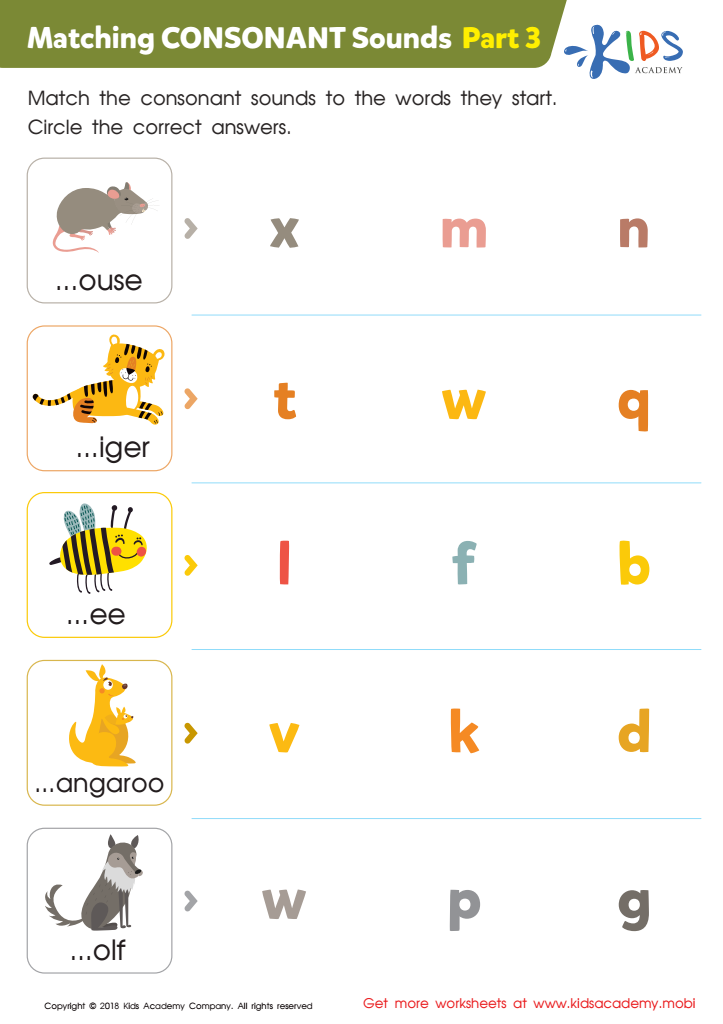Normal Beginning Consonants Worksheets for Ages 3-5
9 filtered results
-
From - To
Enhance your child's early literacy skills with our "Normal Beginning Consonants Worksheets" designed for ages 3-5. These engaging activities help young learners recognize and practice consonant sounds at the start of words. With vibrant illustrations and interactive exercises, children will enjoy identifying and writing letters that spark their interest in language. Our worksheets encourage essential skills such as phonemic awareness, fine motor development, and letter recognition, making learning fun and effective. Perfect for homeschooling or classroom use, these resources provide a solid foundation for early reading success. Empower your child's learning journey today with these delightful worksheets!


Words with Sound M Reading Worksheet


Words with sound h Reading Worksheet


Words with sound p Reading Worksheet


Words with sound f Reading Worksheet


Twin Onset Worksheet


Vowel and Consonant Sounds: Assessment Worksheet


Matching Consonant Sounds: Part 3 Worksheet


Matching Consonant Sounds: Part 2 Worksheet


Matching Consonant Sounds: Part 1 Worksheet
Understanding normal beginning consonants is crucial for children aged 3-5 as it lays the foundation for early literacy skills. At this developmental stage, children are typically beginning to explore language, and recognizing initial consonants is a key step in their journey to reading. When children learn to identify and articulate consonants, it helps them decode words, which supports phonemic awareness—a critical skill for reading fluency.
For parents and teachers, focusing on normal beginning consonants allows for targeted activities that enhance language development. Engaging activities like word games, songs, and rhymes that highlight these sounds make learning fun and effective. Moreover, when children grasp the concept of beginning consonants, they become more confident in attempting to read and spell, fostering a love for literacy.
Moreover, vocabulary acquisition improves as children learn to connect sounds with letters, enabling them to express themselves more effectively. This skill also supports their cognitive development, enhancing memory and problem-solving abilities. Ultimately, ensuring that young learners understand normal beginning consonants sets them up for academic success, paving the way for them to become proficient readers and writers in the years to come.

 Assign to My Students
Assign to My Students
















